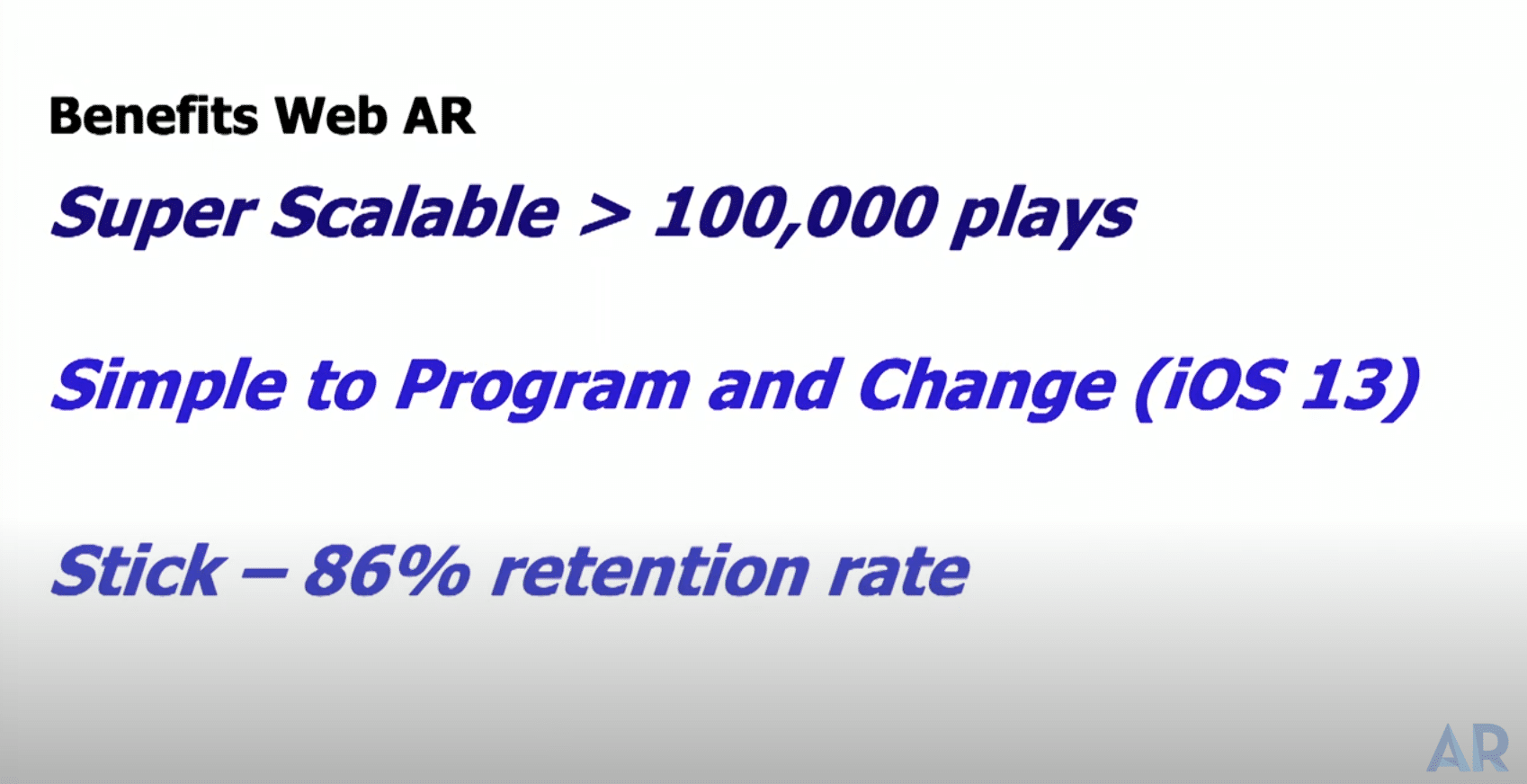
XR Talks is a series that features the best presentations and educational videos from the XR universe. It includes embedded video, as well as narrative analysis and top takeaways. Speakers’ opinions are their own.
When done right, AR has a natural ability to engage users with interactivity and novelty. That’s one reason why it’s an effective ad medium, outperforming other media on key performance indicators. The latest evidence comes from Gramercy Tech’s Jeremy Patuto at ARiA (video below).
AR-based marketing campaigns that Gramercy has executed for its clients have seen up to 2.25x boosts in dwell time — a telling engagement metric, as we’ve examined. For example, its AR experience for the Museum of Dogs increased onsite dwell time from 20 to 45 minutes.
But an even greater set of KPIs came from its work with Ally Bank on a multi-city Monopoly-themed AR game. As background, AR campaigns can span the consumer purchase funnel, from impression to action. This campaign lived at the top of the funnel as a brand-awareness play.

Specifically, the AR campaign was gamified as a scavenger hunt. In six U.S. cities, it placed tiles on the ground that represented the 36 squares (properties) of a Monopoly board. To collect a square required scanning it with one’s smartphone which activated an AR animation.
The animation featured an AR overlay of Mr. Monopoly driving up in a fancy car and awarding points and prizes. That included cash prizes, awarded within a few hours to the user’s email address (entered after winning something). And through it all, Ally’s brand was front & center.
And the results? Ally achieved 100,000 plays, each of which represents a highly engaged brand impression and an email address for follow-up marketing. 86 percent of players went on to complete the game which entailed finding an additional five Monopoly pieces after the first one.
One thing that jumps from these results is scale. AR is often mislabeled among brand advertisers as lacking scale. But 100,000 high-engagement impressions is notable. We’ve seen greater reach in a few outlying cases, but those didn’t have the same depth of brand engagement seen here.

So what can be attributed to these results in the spirit of identifying best practices? AR’s natural engagement played a part, as well as UX design and intuitive interactions. These are amplified by recognizable and lovable IP. This mix contains elements of Pokemon Go’s success formula.
“It was only after a week that there were a hundred thousand plays in these six cities,” said Patuto on stage at ARiA. “And it wasn’t like there were brand ambassadors [saying] ‘hey come here, play this game.’ It was just naturally out there on the street and people were finding it.”
Another success factor Patuto specifies is the fact that web AR was the distribution channel for the experience. The serendipity of finding game tiles on sidewalks required an AR format that activated the experience quickly. Waiting to download an app would have spoiled the moment.
And practically speaking, web AR made it accessible across mobile platforms so that the scalability goals above could truly be reached while sidestepping compatibility issues. Lastly, web AR has benefits in being able to push updates live rather than dealing with app version updates.

As for the challenges (equally important for strategic takeaways), there were a few technical hurdles. To meet user-friendliness goals, the experience had to work over a 3G connection and limit battery drain. This required stripping down animations to a maximum polygon count.
“Polycount couldn’t exceed 35,000 triangles which sounds like a lot but it’s really not,” said Patuto. “And then we had to make sure that the file size was under 10 megabytes. So we couldn’t do too much with shadows and we had to be very smart with how we rendered all this stuff.”
Fraud was also a challenge, as is always the case for anything location-based (just ask Niantic). There were also hiccups with the physical markers to get them to register the user’s scan and game accomplishment. But the Gramercy team was able to tackle these issues as they arose.
The lesson: have an agile team that’s ready to roll with issues on the fly. Because AR is a new marketing vehicle, the playbook is still being written. But it’s clear already that there are lots of potential advantages for brands that want to reach deeper levels of customer engagement.
See the full video below.
